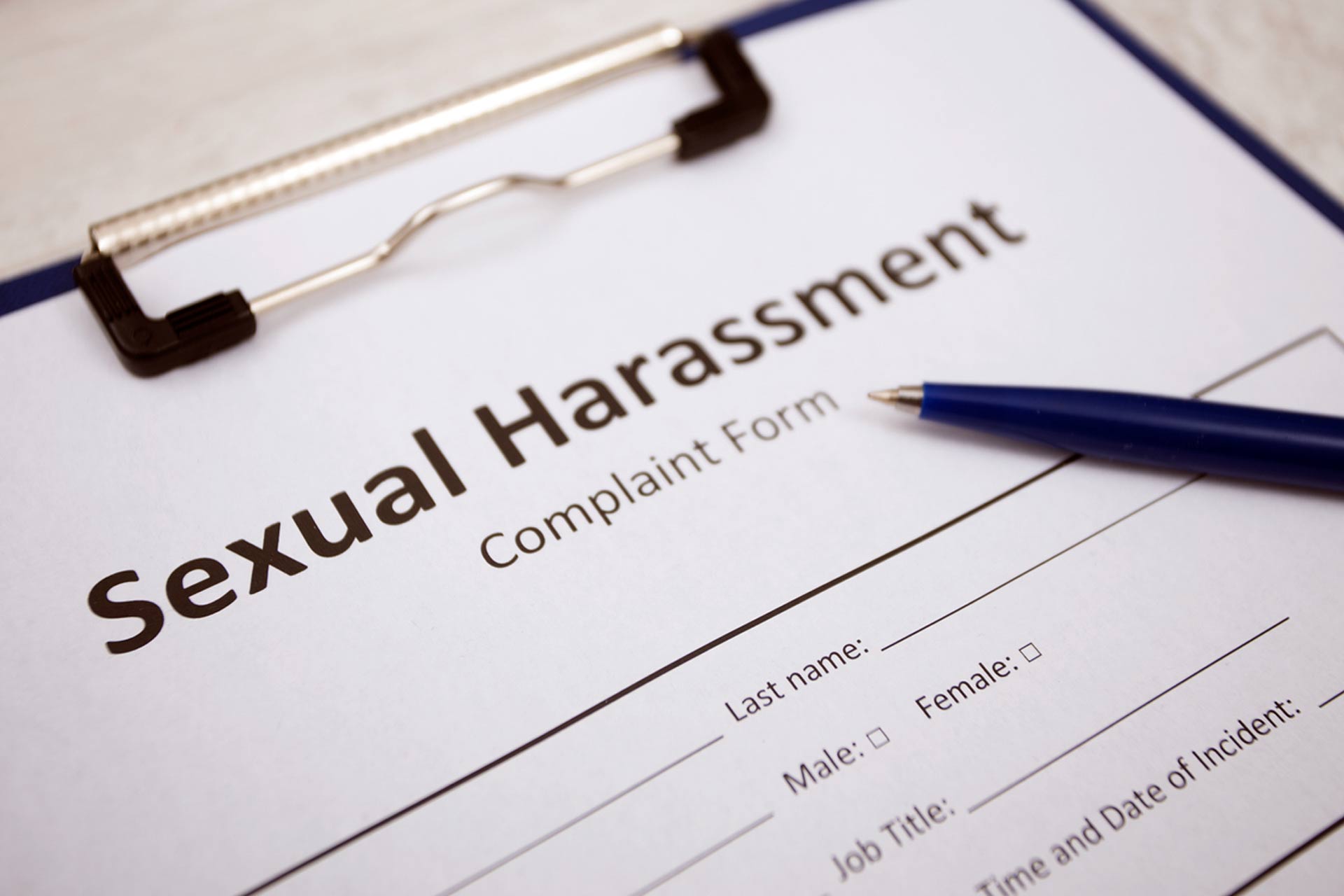The next round of amendments as set out in the Fair Work Legislation Amendment (Secure Jobs, Better Pay) Act 2022 (Cth) have taken effect from 6 March 2023. Relevantly for employers, this includes new provisions that expressly prohibit sexual harassment in connection with work and which provide an avenue for harassed workers to obtain compensation, financial penalties or other orders against their offenders as well as businesses that have failed to take reasonable steps to protect against the risk of sexual harassment in the workplace.
What does “sexually harass” mean?
Helpfully, the Fair Work Act 2009 (Cth) (FW Act) adopts the same definition of “sexually harass” as the Sex Discrimination Act 1984 (Cth) (SD Act), namely that a person sexually harasses another person if:
- they make an unwelcome sexual advance, or an unwelcome request for sexual favours, to the person harassed; or
- they engage in other unwelcome conduct of a sexual nature in relation to the person harassed;
in circumstances in which a reasonable person, having regard to all the circumstances, would have anticipated the possibility that the person harassed would be offended, humiliated or intimidated.
Prohibiting sexual harassment in connection with work
The new provision makes it unlawful for a person (the first person) to “sexually harass” another person (the second person) who is:
- a worker in a business or undertaking; or
- seeking to become a worker in a particular business or undertaking; or
- a person conducting a business or undertaking (PCBU).
The prohibition applies if the harassment occurs “in connection with” the second person being a person of the kind mentioned in paragraph (a), (b) or (c) above.
It should be noted that the phrase “in connection with” has been given a broad meaning by the Federal Court (when determining cases involving sexual harassment under the SD Act) and we’d reasonably anticipate that the Fair Work Commission (FWC) will follow a similarly broad interpretation of this phrase.
Dealing with disputes
Relevantly, if a person alleges they have been sexually harassed in contravention of this new provision, they (or an industrial association that is entitled to represent the industrial interests of the aggrieved person, e.g., a union) may apply to the FWC to do either or both of the following;
- making a stop sexual harassment order; and/or
- dealing with the dispute (other than by arbitration) (described below).
Orders to stop sexual harassment
A stop sexual harassment order is aimed at preventing future harassment. Accordingly, an order to stop sexual harassment can only be made if the FWC is satisfied that unlawful sexual harassment has occurred and there is a risk of the sexual harassment continuing. Although the FWC has broad powers to make any preventative orders it considers appropriation – the FWC cannot award monetary compensation (under this type of application).
Dealing with the dispute
An application to otherwise with the dispute is intended to remedy past harm caused by sexual harassment. Importantly, these applications will need to typically be made within 24 months of the alleged conduct occurring.
Where the application does not solely consist of a stop sexual harassment order, the FWC must deal with a dispute by mediation or conciliation, or by making a recommendation or expressing an opinion. If the FWC is satisfied that all reasonable steps have been, or are likely to be, unsuccessful, the FWC must then issue a certificate, which enables the aggrieved party to file a court application in the Federal Circuit and Family Court of Australia and/or the Federal Court of Australia. In the alternative, if the parties jointly agree, they can apply to the FWC to have the matter heard by arbitration.
If the application is successful, the Court may make any order that is considers appropriate – including compensation and the imposition of a penalty.
Furthermore, employers should be aware that the Fair Work Ombudsman (FWO) is also empowered to initiate court action for breaches of the prohibitions on sexual harassment in connection with work or for a breach of any stop sexual harassment order.
Other key matters
Conduct before 6 March 2023
The new provisions in the FW Act only apply to sexual harassment that occurs on or after 6 March 2023 (and not to conduct engaged in prior to this time). Sexual harassment claims which pre-date this remain actionable under applicable Federal, State and Territory anti-discrimination laws or the previous stop sexual harassment order provisions of the FW Act.
Vicarious liability
The new provisions also make clear that an employer or principal can be vicariously liable for unlawful sexual harassment engaged in by its employees or agents in breach of the FW Act. This means that a victim of sexual harassment can bring its claim against:
- the offender; or
- the employer or principal; or
- both the offender and the employer or principal.
Like vicarious liability under the SD Act, an employer or principal who can demonstrate that they took all reasonable steps to prevent the sexual harassment from occurring will not be vicariously liable for the actions of their employees or agents. The onus is on the employer or principal to prove they took all reasonable steps.
Concurrent operation
These new laws operate concurrently with existing state and territory laws that prohibit sexual harassment at work and employees can choose the jurisdiction in which they wish to pursue their complaint (but will not be permitted to seek a remedy under multiple jurisdictions).
Respect@Work
These changes are in addition to the Anti-Discrimination and Human Rights Legislation Amendment (Respect at Work) Act 2022 (Cth) (Respect@Work Act) (which commenced on 12 December 2022). The Respect@Work Act imposed a positive duty on employers and PCBUs across the country to take “reasonable and proportionate” measures to eliminate unlawful discrimination, including sexual harassment, as far as possible. In other words, duty holders need to be taking a proactive approach to prevent sex discrimination, sexual and sex-based harassment, hostile working environments and victimisation. From 12 December 2023, the Australian Human Rights Commission (AHRC) will be empowered to monitor and assess a duty holder’s compliance with its positive duty (and it should be noted that significant additional funding has been budgeted for the AHRC to undertake this function).
What does this mean for employers?
Workers will have a “quick and easy” avenue to deal with disputes involving sexual harassment in connection with work. For employers, creating a workplace free from sexual harassment has never been more important.
In addition to ensuring your workplace policies and procedures are compliant, up-to-date and understood by your workforce, employers should consider implementing:
- risk identification systems (e.g., to conduct regular risk assessments which record identified risks in a risk register);
- sexual harassment prevention plans (which detail an organisation’s sexual harassment prevention strategy, made in consultation with staff);
- regular employee training;
- regular reviews of processes and procedures (to ensure they remain up-to-date and compliant); and
- frameworks that set out where, how and who employees can make complaints to (and ensure that relevant personnel within the organisation are equipped to deal with any complaints received and to ensure the organisation has complete oversight over all complaints, e.g., through an internal complaints register).
If you are an employer and your sexual harassment prevention frameworks require review, or you would like further advice on the matters raised in this alert, feel free to reach out to one of our team on (03) 9448 9600.
The above is general information, which is current at the time of publication, and should not be taken as legal advice.
Liability limited by a scheme approved under Professional Standards Legislation.








